Sushi’s Global Spread: From Japanese Delicacy to Worldwide Phenomenon
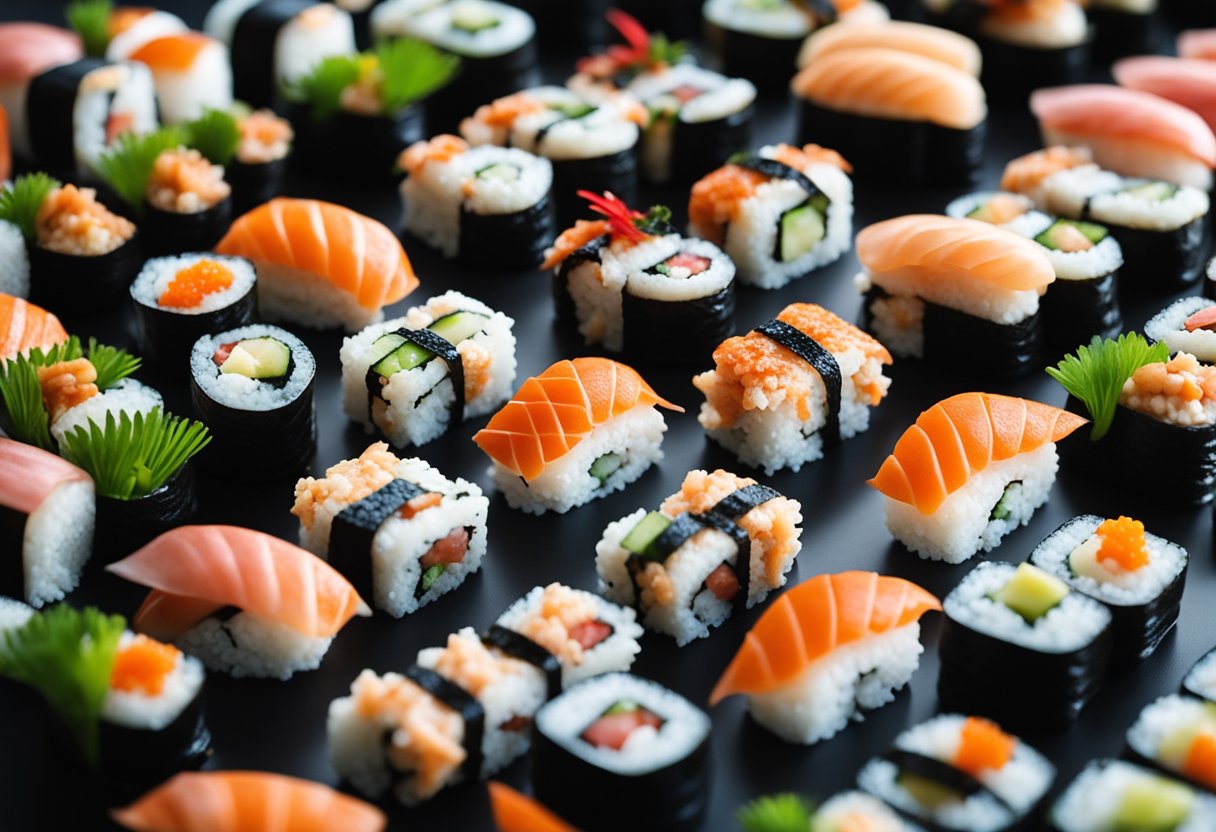
Updated On: April 04, 2024 by Raghda Elsabbagh
Across the globe, sushi has become synonymous with Japanese cuisine and a symbol of the culinary finesse that the country offers. What once began as a simple method for preserving fish in fermented rice has transformed into a vast array of dishes that capture the imagination and palates of food enthusiasts everywhere. Sushi’s rise from its traditional roots to its current status as a global phenomenon is not only a testament to its inherent appeal but also to the world’s growing appetite for diverse and culturally rich dining experiences.
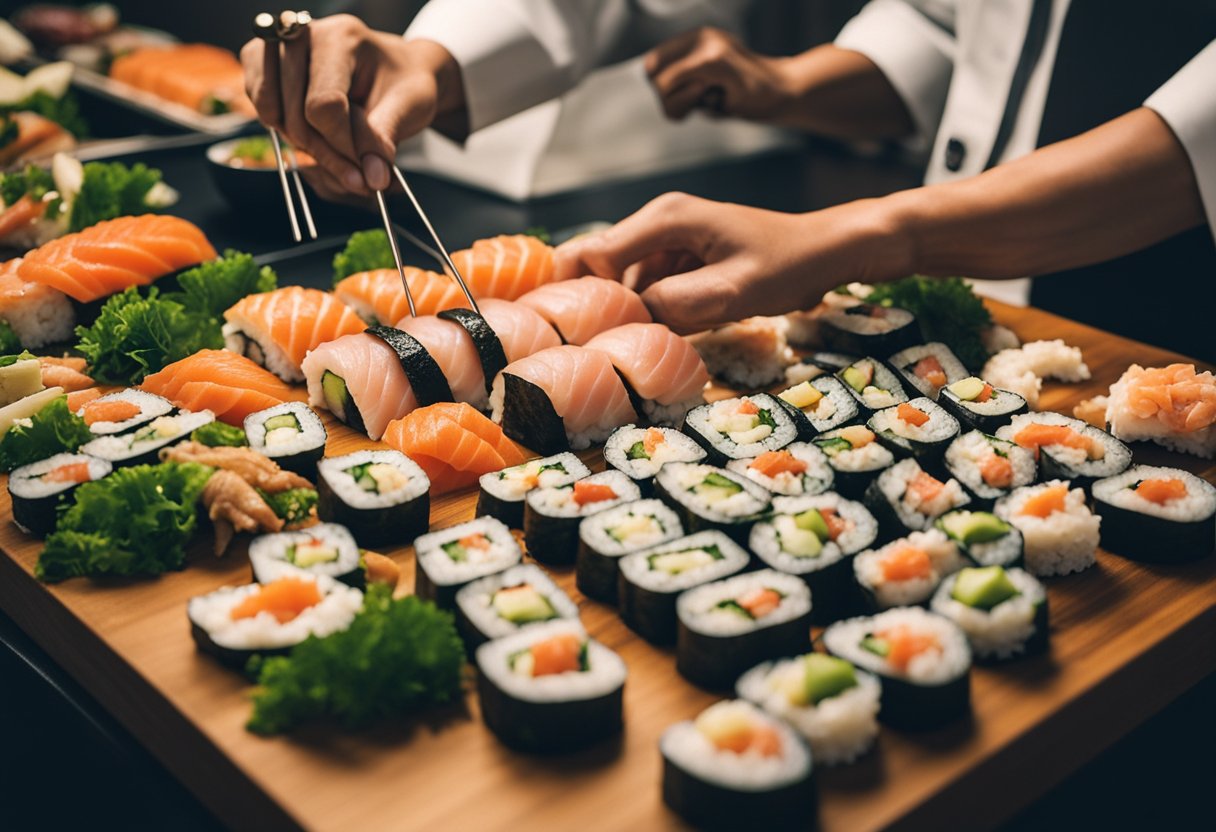
With its entry onto the world stage, sushi has undergone a remarkable evolution. Accessibility to fresh, high-quality ingredients and the artistry of sushi chefs have catapulted this traditional Japanese delicacy to a staple in international cuisine. As it journeyed from the streets of Tokyo to the bustling cities around the world, sushi has sparked a cultural exchange that extends far beyond the confines of a dining table. It is now an integral part of global gastronomy, celebrated for its combination of simplistic beauty and complex flavours.
Table of Contents
Origins of Sushi in Japan
Before the popularisation of sushi we know today, its origins can be traced back to ancient Japan, where the idea of combining rice with fish was more than just cuisine—it was a form of preservation.
Edo Period Beginnings
In the bustling Edo period, around the 1820s, sushi underwent a transformation that would set the stage for international culinary fame. The introduction of nigiri-zushi by Hanaya Yohei capitalised on the simple yet delectable pairing of vinegared rice with slices of raw fish. This innovation marked the transition of sushi from traditional fermenting methods to a fast, convenient street food favoured by the chōnin class in Edo, now known as Tokyo.
Traditional Techniques and Ingredients
At the heart of sushi’s inception lies narezushi, the process of fermenting fish with salt and rice, a method developed over centuries to preserve the fish for consumption out of season. While the rice was initially discarded, through development, rice began to be consumed along with the fish, creating a harmonious blend of flavours. Core ingredients that uphold the integrity of sushi encompass fresh raw fish, shari (sushi rice seasoned with vinegar), and basic condiments such as soy sauce and wasabi. Today, this tradition can be experienced in various sushi-related customs and festivals, such as Setsubun, which celebrates the change of seasons with sushi rolls.
Sushi’s Journey to the United States

As we explore sushi’s rise in popularity within the United States, it’s essential to recognise California’s vibrant role and the profound impact of sushi chefs in establishing this cuisine as a mainstream favourite.
California’s Role
The state of California, and Los Angeles in particular, played a pivotal role in the introduction and adaptation of sushi in America. It was here that sushi transitioned from a novel Japanese import to a culinary mainstay. The California roll, an inside-out roll featuring crab (or imitation crab), avocado, and cucumber, emerged as a gateway dish, helping to familiarise the American palate with sushi. This ingenious creation not only showcased local ingredients but also addressed the hesitancy towards raw fish, becoming a nationwide hit.
Sushi Chefs’ Influence
Talented sushi chefs have been instrumental in the spread and adaptation of sushi in the United States. These chefs brought with them expertise in traditional sushi preparation while also displaying a willingness to innovate to meet local tastes. The presence of high-quality bluefin tuna and other seafood allowed these chefs to craft authentic experiences for their guests. Over time, sushi has moved beyond niche Japanese restaurants, with sushi bars cropping up across cities and suburbs, reflecting the cuisine’s deep integration into the fabric of American dining culture.
Globalisation of Sushi
The sushi industry has undergone profound changes, transitioning from a traditional Japanese delicacy to a staple in global cuisine, with its presence now spanning across continents from North America to Southeast Asia.
Beyond America’s Borders
Sushi’s leap beyond America heralded a new era for global cuisine, firmly entrenching itself within different cultures and palates. It is not only confined to America but also prominent in regions such as Southeast Asia, where the fusion of local tastes with traditional sushi has helped popularise this healthy, fast-food option.
Sushi Bars Worldwide
Internationally, sushi bars have become commonplace, ranging from high-end restaurants to accessible kiosks in shopping centres, reflecting globalisation’s strong influence on food culture. In North America, the sushi industry has seen remarkable growth, leading the way in sushi’s global spread. This has helped introduce sushi’s array of flavours and forms to a worldwide audience, thus expanding the industry’s global presence.
Innovation and Modern Sushi
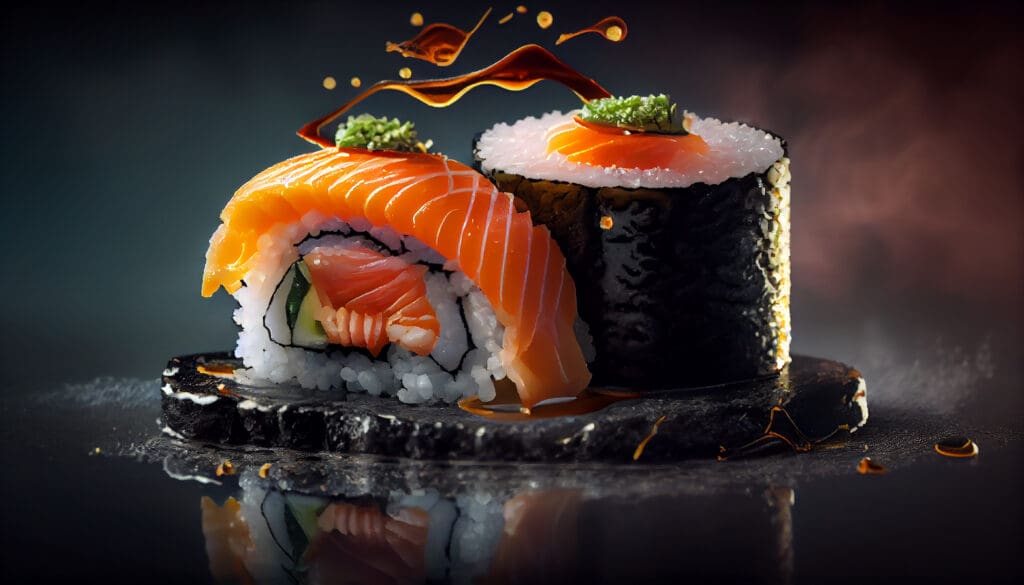
As we explore the dynamic nature of modern sushi, it’s evident that innovation has played a crucial role in its global popularity. Through the blending of traditional techniques with new ingredients and styles, sushi has become a canvas for creativity.
Fusion Varieties
Fusion sushi has thrived on blending diverse culinary traditions. For instance, sushi burritos are a prime example of how Mexican and Japanese flavours can coalesce into a convenient handheld meal. By boldly fusing elements from different cuisines, fusion sushi caters to a variety of palates and dietary preferences, seamlessly integrating into the global food culture.
- Examples of Fusion Sushi:
- Sushi Burritos: Combining sushi rice and nori with fillings typically found in burritos.
- Spicy Tuna Rolls: Often include mayonnaise and hot sauce, ingredients not traditionally used in Japanese sushi.
This inventive approach enables the essence of sushi to evolve and adapt to local tastes around the world continually.
Creative Presentation
The creative presentation of sushi is another facet where innovation shines. Whether it’s artistic plating or new ways of serving, the presentation has elevated sushi from mere food to an art form. Colours, shapes, and textures are manipulated to enhance the dining experience, making sushi not only a taste journey but also a visual spectacle.
- Elements of Presentation in Modern Sushi:
- Use of bold colours: Incorporating vibrant ingredients to catch the eye.
- Architectural plating: Constructing sushi in visually striking forms.
Through these innovations, modern sushi provides an immersive experience that appeals both to the sense of taste and the aesthetic sensibilities of diners, ensuring that it remains at the forefront of culinary evolution.
Cultural Significance and Exchange
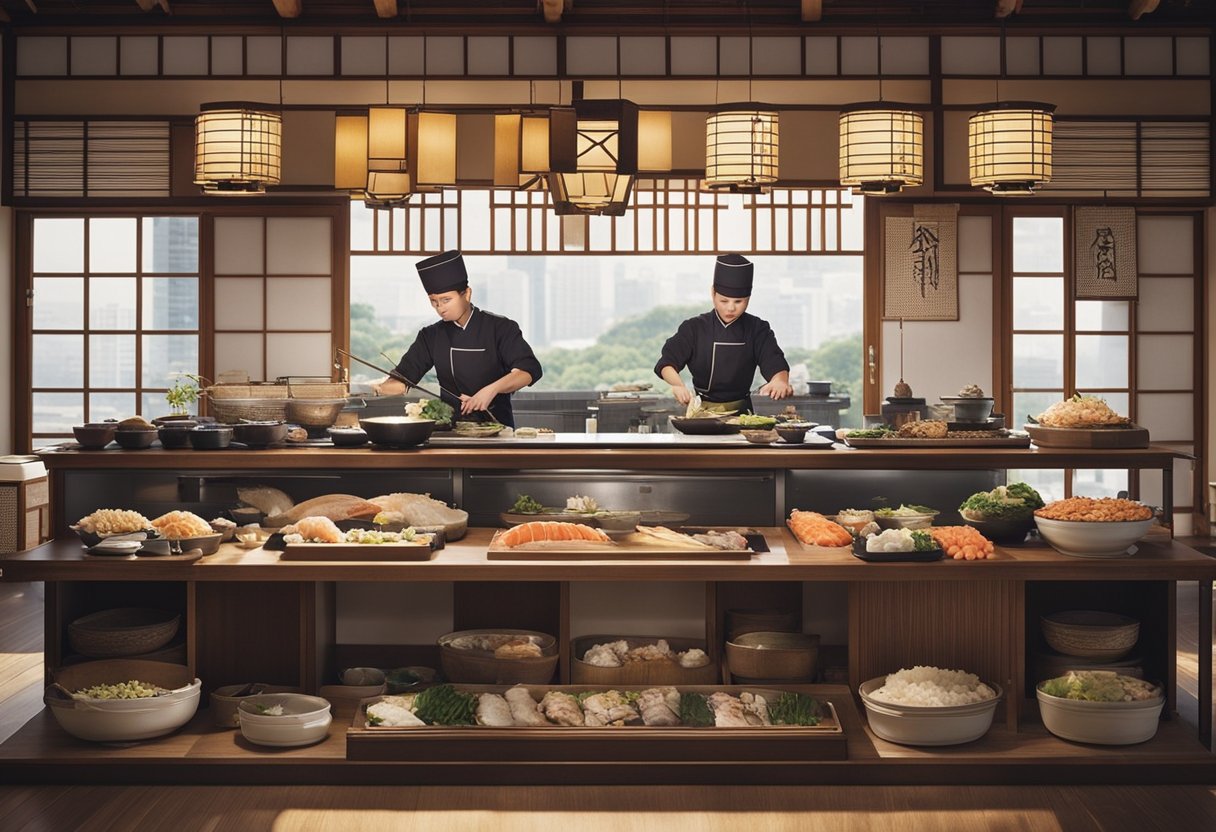
As sushi has traversed the globe, it has become a medium of cultural exchange, enhancing food culture and challenging concepts of authenticity.
Incorporating Local Flavours
We have witnessed sushi’s remarkable ability to adapt to foreign cuisines, embracing local flavours while maintaining its inherent Japanese essence. This fusion of tastes often leads to innovative creations that reflect the culinary preferences of different regions. In the United States, for instance, the California Roll is a testament to such cultural exchange, where the traditional sushi was reimagined with avocado and crab to cater to the Western palate.
Sushi and Identity
Sushi’s global spread also plays a role in the dialogue about culinary authenticity and food culture identity. Authentic Japanese sushi rests on subtlety and a balance of flavours, encouraging a form of respect towards the ingredients and preparation methods. As sushi continues to evolve internationally, it carries with it a piece of Japanese identity, offering a taste of Japan’s rich cultural heritage in every bite. Yet, it also opens avenues for acknowledging and appreciating the diversity embedded within food cultures that have adopted sushi and made it part of their own culinary landscape.
Health and Dietary Aspects of Sushi
In recent years, sushi has transcended its traditional boundaries to emerge as a food that’s not only revered for its taste but also for its health benefits. As we explore the myriad of ways sushi contributes to a balanced diet, it’s important to note its nutritional content, including high levels of omega-3 fatty acids and the growing availability of vegetarian options that cater to diverse dietary preferences.
Nutritional Benefits
Sushi is a dish often packed with omega-3 fatty acids, particularly when fish like salmon or tuna are a component. Omega-3s are known for their role in heart health, reducing inflammation and potentially lowering the risk of chronic diseases. Additionally, sushi can be a source of lean protein and a variety of vitamins and minerals depending on the ingredients used. The inclusion of seaweed, for example, adds iodine and trace minerals essential for thyroid function and overall well-being.
Rise of Vegetarian Options
The rise of vegetarianism has significantly influenced the evolution of sushi. With a growing trend towards healthy eating, sushi chefs have become creative, using vegetables, fruits, and grains to offer a range of vegetarian options. This not only provides a spectrum of vitamins, minerals, and fibres but also caters to those who abstain from meat for ethical, health, or environmental reasons, making healthy eating accessible and enjoyable for everyone.
Economic Impact of the Sushi Industry
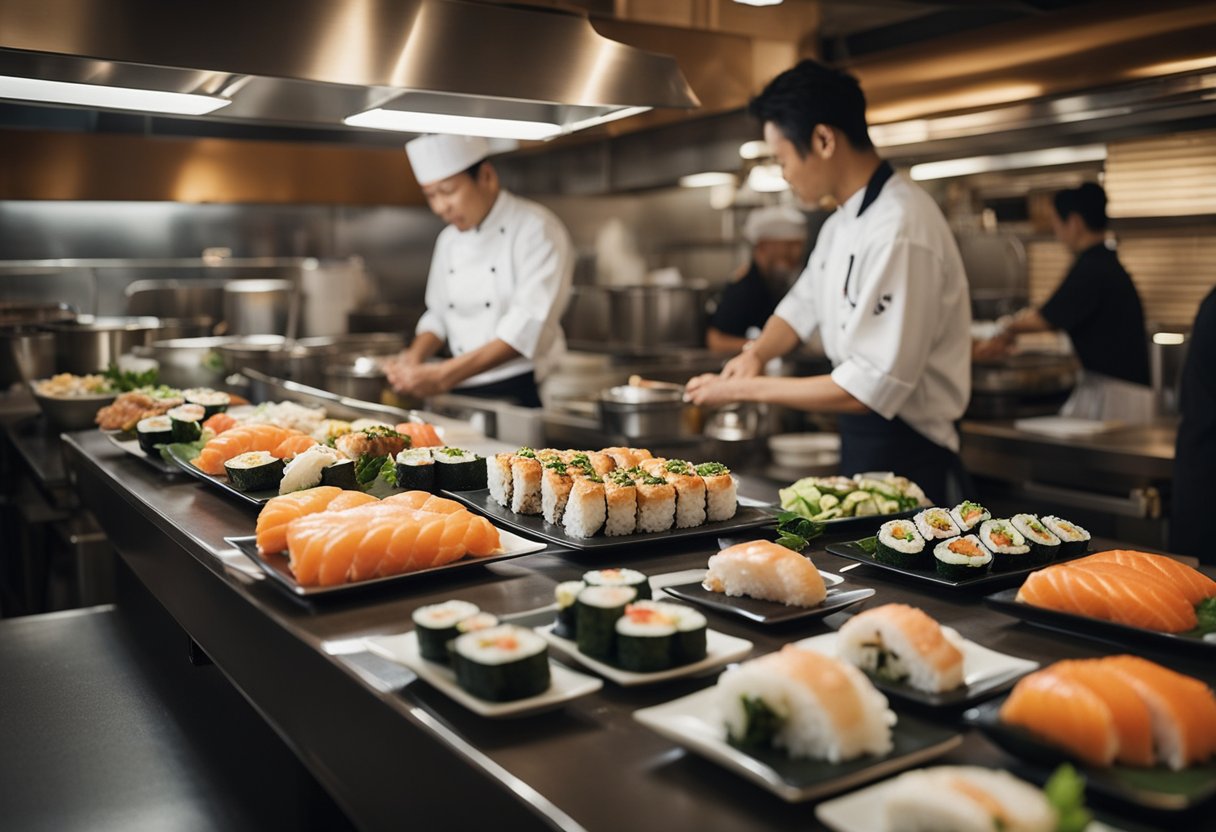
The sushi industry has become a significant financial catalyst, influencing various sectors, from the fishing industry to the global restaurant market. The Tsukiji market in Tokyo, known for its vibrant auctioneers and multimillion-dollar fish sales, stands as a testament to sushi’s economic prominence.
Fish Market Dynamics
The Tsukiji market is often at the heart of discussions regarding sushi’s financial outreach. Here, the demand for premium sushi-grade fish like bluefin tuna drives prices and creates a high-stakes economic environment. The fishing industry rallies around such markets, with the economy benefiting from the trade in lush, edible marine resources that span oceans to reach an international palate.
Restaurant Economics
In the realm of restaurant economics, sushi has carved out an enviable niche. Establishments range from budget-friendly conveyor belt sushi spots to exclusive Michelin-starred restaurants. The sushi industry has become synonymous with entrepreneurial success, commanding premium prices for quality dining experiences. This has not only made sushi a staple in five-star restaurants but also a regular offering in supermarkets, thereby expanding its reach and influence within the economy.
Environmental Concerns and Sustainability
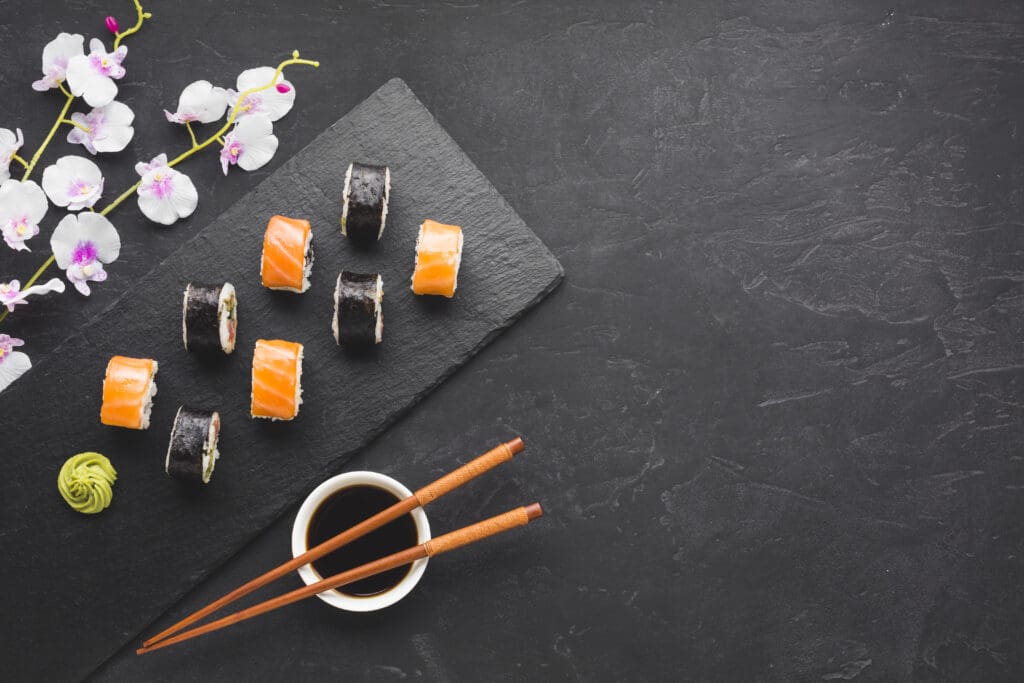
As sushi continues its rise in popularity around the globe, it brings to light important environmental issues. We will explore the overfishing crisis and the sustainable seafood initiatives that are crucial in mitigating the impact of sushi’s global spread.
Overfishing Crisis
The appetite for sushi has led to increased fishing pressure on certain species, especially bluefin tuna, which is facing a significant overfishing challenge. Bluefin tuna, among other species, is pivotal in sushi cuisine but is now at risk due to high market demand. Fisheries targeting this species often exceed sustainable levels, which can have cascading effects on ocean ecosystems.
Overfishing affects not only the balance of marine life but also the livelihoods of fishermen reliant on these stocks for their income. The decline in fish populations necessitates urgent attention to enforce stricter quotas and to consider the health of marine species within our oceans.
Sustainable Seafood Initiatives
In response to overfishing concerns, sustainable seafood initiatives are gaining momentum. The rise of “sustainable sushi” signifies a shift towards sourcing seafood that does not compromise the long-term health of fisheries or the marine environment. Leading sushi restaurants internationally are now aligning their practices with sustainability goals, acknowledging the environmental impact of sushi.
These initiatives often involve collaboration with fisheries committed to sustainable practices, certification programs that validate environmentally friendly operations, and consumer education to raise awareness about the importance of choosing sustainably sourced seafood. By engaging with sustainable seafood initiatives, we are helping to ensure the legacy of sushi without exhausting our precious marine resources.
Social and Dining Etiquette
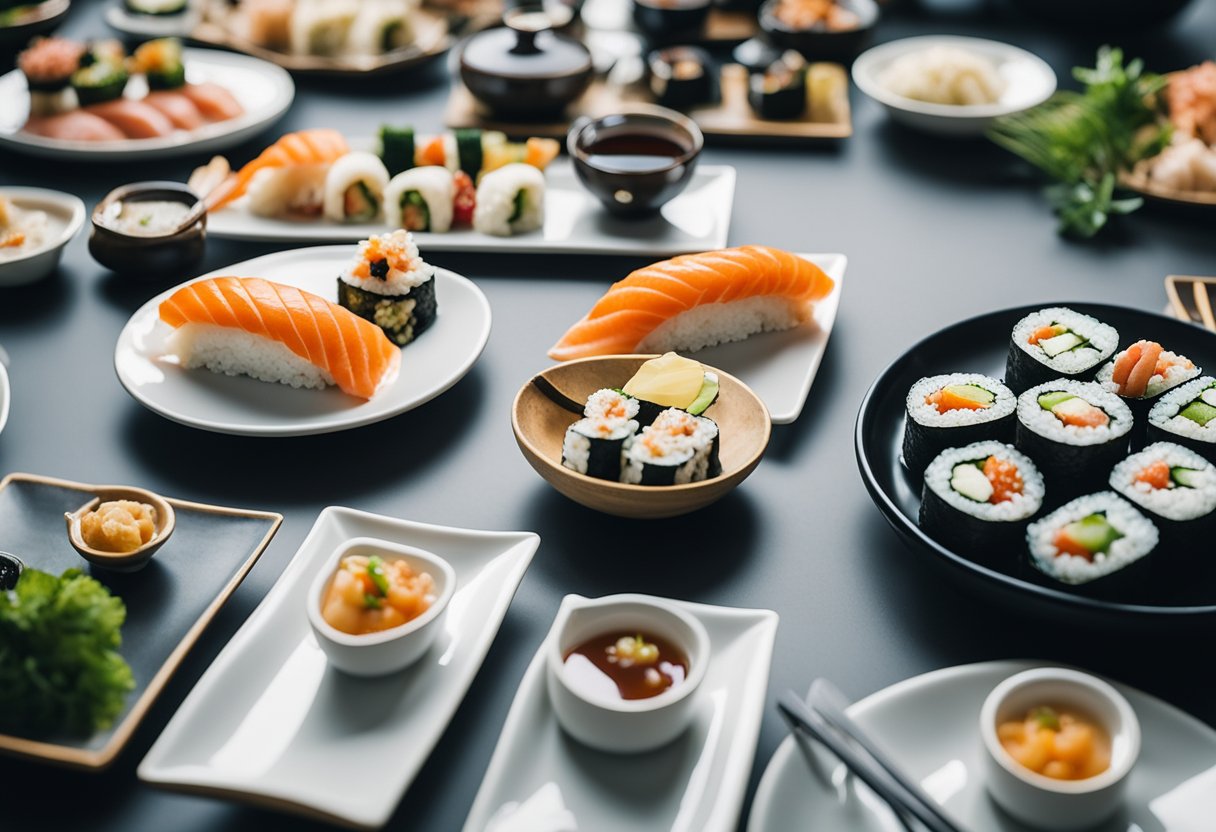
In Japanese culture, the act of eating sushi is surrounded by a variety of customs that contribute to the dining experience. We share the key etiquettes to preserve the traditions of Japanese cuisine and enhance its signature umami.
Sushi Dining Customs
When enjoying sushi, especially in the presence of a chef, Japanese dining etiquette is quite specific. It is polite to eat what is served to you, and compliments to the chef for their selection are often appreciated. Makizushi, a type of rolled sushi, should ideally be eaten in one bite to appreciate the blend of flavours created by the chef. Let’s respect these culinary customs, as they are integral to the authenticity of the experience.
Use of Chopsticks
Using chopsticks requires its own set of manners. Do not rub your chopsticks together — it implies that the utensils are cheap. When picking up sushi, aim to grab it by the side rather than the top to avoid dismantling it. Should you wish to share food, use the opposite end of your chopsticks to transfer a piece to another’s plate. This maintains the decorum and hygiene expected at a dining table.
These principles guide us through a respectful and pleasurable sushi dining experience, honouring the intricate practices of Japanese cuisine.
Key Figures in Sushi’s Global Spread
The global journey of sushi has been shaped by remarkable individuals who bridged cultures and introduced Japanese cuisine to the world. These key figures have left indelible marks on culinary landscapes, transforming sushi into a global phenomenon.
Pioneering Sushi Chefs
- Nobu Matsuhisa: Renowned for his innovative style that blends traditional Japanese techniques with Peruvian ingredients, Nobu Matsuhisa is a seminal figure in popularising sushi across the globe. With his chain of restaurants, Nobu has become synonymous with upscale sushi dining, earning accolades and celebrity status.
Culinary Biographies
- S. Issenberg/Sasha Issenberg: Sasha Issenberg provides a detailed exploration of sushi’s international rise in The Sushi Economy: Globalisation and the Making of a Modern Delicacy. Issenberg’s work is a compelling culinary biography that tracks how sushi’s cultural and economic forces converged into the mainstream.
Reflections and Future Trends
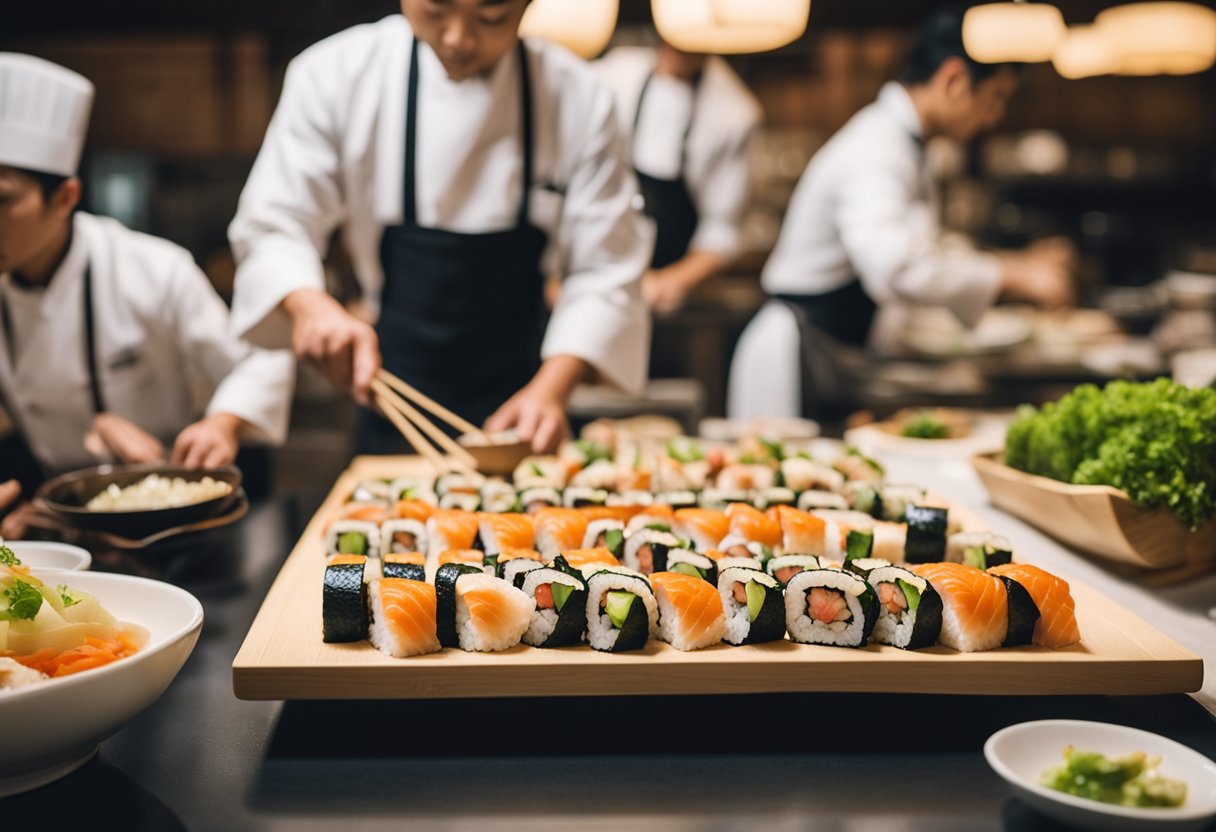
As we look to the future, it’s clear sushi has transcended its origins, signalling a shift in how we engage with global cuisine.
Sushi’s Place in the Future
Sushi’s metamorphosis from humble Japanese street food to a modern delicacy underscores its adaptability and staying power. Its role in the global food scene is not just as a dish but as a symbol of the sushi revolution, demarcating a cultural intersection where tradition meets innovation. As culinary boundaries continue to blur, sushi is poised to maintain its prominence, evolving with consumer tastes and sustainability practices. It stands as a testament to how global influences can reinvigorate local fare, cementing its status in the future of global cuisine.
Emerging Popularity and Challenges
The growth in popularity of sushi worldwide reflects a broader appetite for diverse, global flavours. However, this surge comes with its own set of challenges. From maintaining the integrity of traditional sushi-making techniques to navigating the pressures on marine ecosystems, the path forward is complex. There’s a balance to be struck between catering to growing demand and preserving the very essence of what makes sushi a key takeaway from Japan’s rich culinary portfolio. As we face these challenges, our focus will be on promoting responsible consumption and supporting innovations that honour sushi’s cultural origins while embracing its global journey.
Frequently Asked Questions
In this section, we uncover common queries about sushi’s origins, cultural significance, and global impact.
How did sushi originally develop in Japanese cuisine?
Sushi arose as a method of preserving fish in fermented rice. Later, this practice evolved in the Edo period, where sushi was served as an early form of fast food.
What historical events led to the international spread of sushi?
The post-WWII era saw Japanese cuisine, especially sushi, gaining popularity via American-Japanese interactions. Cultural exchange and the globalisation of food markets facilitated its worldwide spread.
In what ways does sushi play a significant role in Japanese culture?
Sushi is deeply rooted in Japanese cultural traditions and social practices, reflecting the artistry and seasonal awareness fundamental to many aspects of Japanese life.
What are some common misconceptions about the origins of sushi?
A prevalent misconception is that sushi has always involved raw fish when, in fact, it originated as preserved fish served with rice, which was later discarded before eating.
How has the global demand for sushi affected the environment?
The insatiable global demand for sushi, particularly for bluefin tuna, has led to overfishing and environmental concerns, threatening the balance of marine ecosystems.
What factors have contributed to the worldwide popularity of sushi?
Sushi’s simplicity, health benefits, and the international allure of Japanese culture have all contributed to its status as a culinary phenomenon around the globe.






